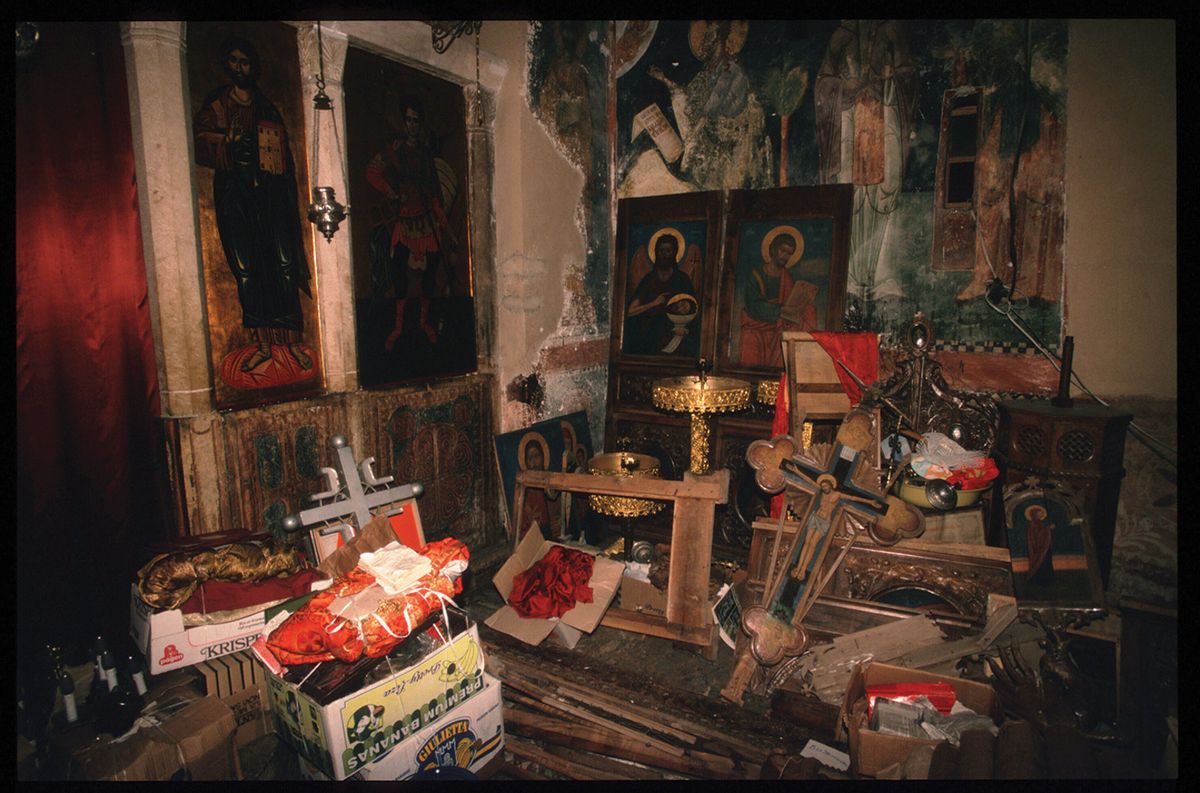A report has revealed the audacity and organisation of criminals trading in looted antiquities from the former Yugoslavia.
The study, by the criminologist Sam Hardy and published in the Journal of Computer Applications in Archaeology, pulls and analyses data from open-source intelligence, and from platforms including Facebook, Instagram, Etsy and eBay, to explore how online communities support, encourage and facilitate the looting of sites.
A total of 8,516 active artefact hunters across the region were identified, with users seemingly working together to buy equipment, locate vulnerable sites and identify future buyers for looted artefacts. Tips on how to avoid being caught or punished were also being circulated, alongside advice as to how to get items through customs, including by ensuring the “postage of parcels under the value threshold for duties checks.”
“Many artefact hunters were conscious of and open about their participation in criminal activity,” the report says. “They encouraged one another to target archaeological features yet to not to get caught, or jokingly stated that it was legal as long as they were not seen by the landowner or caught by the police.”
Whereas conversations about looting have previously focused on the Middle East, there is rising concern about sites in the former Yugoslavia and neighbouring areas. In October, the International Council of Museums (Icom) announced that its latest red list of objects would focus on objects from south-east Europe. “There is sometimes a misconception that illicit trafficking is a concern that only effects regions in crisis,” an Icom press release states. “Recently, and like many other regions in the world, many countries in south-east Europe have seen a surge in the online sale of
illegal antiquities.”
Maritime risk
Cultural property in the region has long been vulnerable. Following the widespread theft and destruction of artefacts across Europe during the Second World War, the Balkan wars of the 1990s saw the methodical destruction of cultural sites in the region. In the post-war flux that followed, stretched police resources and widespread corruption fostered a breeding ground for ongoing looting, theft and laundering activity. Maritime heritage proved particularly vulnerable, with the region’s geographical positioning between Western Europe and the Middle East making it particularly attractive to the black market.
Efforts are being made to curb illicit trade: in September, border police and tax officers in Bosnia and Herzegovina (BiH) were trained up to focus on the illicit trafficking of works of art, with help from the Organization for Security and Co-operation in Europe (OSCE) and the Directorate for Co-ordination of Police Bodies of BiH (Interpol Office).
Nevertheless, high-profile cases—such as the reports that emerged in December 2020 of an Eastern Orthodox Icon being smuggled from conflict-ridden Ukraine and given to Russia’s visiting foreign minister, Sergei Lavrov—are raising concerns that the true extent of the issue remains unclear or documented. A report published on the news website Balkan Insight in September also claims a series of 19th-century Austro-Hungarian forts along the coast of Montenegro are increasingly suffering from intentional neglect and looting.
Facebook trafficking
The revelation in Hardy’s study of the extent of online activity are disturbing. Katie Paul, the co-director of the Antiquities Trafficking and Heritage Anthropology Research Project concurs with its findings. “While much of our research focuses on the Arab World and Asia, we have seen trafficking from Eastern European and Balkan countries occurring on the platform [Facebook]. When it comes to trafficking of antiquities, wildlife, and even human remains, the black market today has become a real, physical place—and it’s on Facebook.”
"The black market today has become a real, physical place—and it’s on Facebook."Katie Paul, the co-director of the Antiquities Trafficking and Heritage Anthropology Research Project
While Hardy says he hopes the study will demonstrate how netnography (the investigation of online behaviour) and social network analysis can actively support intelligence-led policing, he adds that “the findings of the report weren’t necessarily surprising as a lot of the issues emerging proved the same as those found in other areas suffering from looting—that is, an unfortunate cocktail of corruption, poverty and enforcement challenges. These factors all contribute to an environment in which [criminals] can function quite publicly”.


